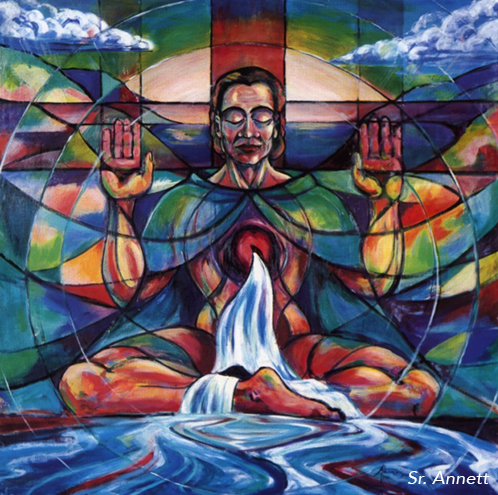
Christ himself is vitally bound up with nature, and his reasons for coming to Earth also include the intention of redeeming the physical universe. What’s implied here? The scientist-theologian-jesuit-priest Pierre Teilhard de Chardin, in conversation with a Vatican official who was confused by his writings and doctrinally suspicious of them, told him that all he is saying is that Christ didn’t just come to save people; he came for that yes, but he also came to save the planet, of which people are only one part. In saying that, Teilhard has solid scriptural backing. Looking at the scriptures, we find that they affirm that Christ didn’t just come to save people; he came to save the world. For example, the Epistle to the Colossians (1:15-20) records an ancient Christian hymn that affirms both that Christ was already a vital force inside the original creation (“that all things were made through him”) and that Christ is also the endpoint to of all history, human and cosmic. The Epistle to the Ephesians, also recording an ancient Christian hymn (1:3-10), makes the same point. At the same time, the Epistle to the Romans (8:19-22) is even more explicit in affirming that physical creation, Mother Earth, and our physical universe are “groaning” as they, too, wait for redemption by Christ. Among other things, these texts affirm that the physical world is part of God’s plan for eventual heavenly life. Nature, not just humanity, is being redeemed by Christ. Christ also came to redeem the earth, not just those of us who are living on it. Physical creation, too, will enter the final synthesis of history, that is, heaven. This means that nature has intrinsic rights, not just the rights we find convenient to accord it. What this means is that defacing or abusing nature is not just a legal and environmental issue; it’s a moral issue. Finally, not least, what is implied in understanding the cosmic dimension of Christ and what that means in terms of our relationship to Mother Earth and the universe is the non-negotiable fact that the quest for community and consummation within God is a quest that calls us not just to a proper relationship with God and with each other, but also to a proper relationship with physical creation. We are humans with bodies living on the earth, not disembodied angels living in heaven, and Christ came to save our bodies along with our souls. He came, as well, to save the physical ground upon which we walk since he was the very pattern upon which and through which the physical world was created.[1]
[1] Excerpt from Fr. Ron Rolheiser’s reflection, “Christ and Nature,” February 2015.
